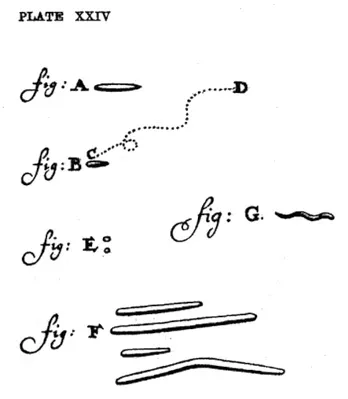1
The Human Microbiota—A Historical and Methodological Overview
In this chapter:
•Why the microbes that live on us are important
•How knowledge of our microbial partners has developed over the centuries
•The experimental techniques available for finding out which microbes live on the various regions of the body and what they are doing there
Text in red signifies a resource with a webpage that is given in full at the end of the chapter
The discovery of microbes in the human mouth by Antonie van Leeuwenhoek (Figure 1.1) as reported in a letter to the Royal Society on 17th September 1683 was the first indication of the existence of the human microbiota (see Box 2.1 for a discussion of terminology).
Figure 1.1.Portrait of Antonie van Leeuwenhoek by Jan Verkolje.
Van Leeuwenhoek was the first person to observe microbes. In 1676 he used a microscope that he had made himself to examine stored rainwater and saw a variety of tiny creatures which he called animalcules. This was a momentous discovery—the existence of a whole new world of living creatures too small to be seen by the naked eye. But imagine his excitement (and possibly horror) when he examined dental plaque from his own mouth and saw similar animalcules (Figure 1.2).
Figure 1.2.Drawings made by van Leeuwenhoek of the microbes he observed in a sample of dental plaque taken from his mouth. A is a bacillus; B is possibly Selenomonas sputigena and the dotted line shows how it has moved from point C to point D; E are possibly Micrococcus spp.; F is possibly Leptotrichia buccalis; G is probably a spirochete.
An extract from his letter to the Royal Society makes an interesting read: “Tho my teeth are kept usually very clean, nevertheless when I view them in a magnifying glass, I find growing between them a little white matter as thick as wetted flower: in this substance tho I could not see any motion I judged there might probably be living Creatures. I therefore took some of this flower and mixt it either with pure rain water wherein there were no Animals: or else with some of my Spittle (having no air bubbles to cause a motion in it) and then to my great surprize perceived that the aforesaid matter contained very many small living Animals which moved themselves very extravagantly. Their motion was strong and nimble, and they darted themselves thro the water or spittle as a Jack or Pike does thro water.” In a subsequent letter to the Royal Society, he also reported the presence of “animalcules” in his feces. While these observations were very surprising and undoubtedly of great interest to seventeenth century scientists, further research into the microbes that inhabit humans proceeded at a very slow pace until it was realized that these microbes were able to cause disease and, much later, that they contributed to human health. Our knowledge of those microbes with which we co-exist has increased enormously during the last few years. For example, during the period from 2000 to 2016 the number of publications in this area increased by approximately 500%, whereas in the 16 years prior to 2000 it increased by only approximately 25%. There appear to be two main driving forces behind this increasing interest in the human microbiota: (1) an awareness of its importance in human disease, development, nutrition, behavior, and well-being; and (2) the development of technologies that enable us to determine not only which microbes are present in the various complex communities that comprise the human microbiota, but also to establish what they are doing in these communities. This chapter will describe these forces from a historical perspective.
1.1The Indigenous Microbiota in Health and Disease
That members of the indigenous microbiota are able to cause disease in humans has been known for a long time and, more than 100 years ago, Elie Metchnikoff (who was awarded the Nobel prize for his discovery of phagocytes) recognized that the gut microbiota played an important role in human health and well-being.
The indigenous microbiota plays an important role in human disease
In the late nineteenth and early twentieth centuries many microbes that we now recognize as being members of the indigenous microbiota of humans were found to be the causative agents of a variety of infectious diseases (Table 1.1). In those days, little was known about the indigenous microbiota; consequently it was not realized that these disease-causing microbes were in fact regularly present on some, if not all, healthy humans and that they usually lived in harmony with their human host.
Table 1.1. Early discoveries of the involvement of members of the indigenous microbi...


